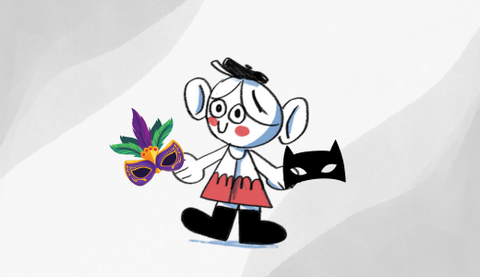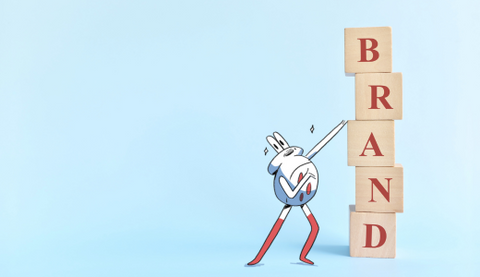ℹ️ Skip to key parts of the session by clicking on the chapter dots along the timeline.
Welcome to the latest Pip Club community event. This session is hosted by Steve Rawling, author of Storyteller Tactics, and it shows you how to get the most out of the Data Detectives card. This neat tactic helps you wrap your data up in a story to help people understand and remember your core message.
When should you use Data Detectives?
This card is for anyone that needs to present data - whether that’s small, simple facts or huge, complex data sets. It helps you identify what the big (interesting) picture is, and explain it to your audience in terms of key questions: what’s interesting here? What’s something we should worry about? What is the biggest opportunity?
Example: At 4pm, 75% of us don’t know what we’re having for dinner tonight.
This is a big picture! Very interesting data to food vendors, recipe bloggers, grocery stores etc. It tells you that the majority of people don’t plan their meals for the week - and probably don’t even do one big weekly shop.
Steve dives into the first part of the card to explain this big picture in more detail.

Data Zoomer
You’ve got your data - now it’s time to turn it into a story. You start by pulling out your insights - the overall trends, such as the example above.
But then, you zoom into the data to get the little picture, using the magic words: “for example…”.
At 4pm, 75% of us don’t know what we’re having for dinner tonight.
For example, Maria is a single mum, and as she’s heading home from picking the kids up from school she’s trying to work out what to give them for their tea. As she walks past Tesco Express in her local area, she sees an evening meal advertised on a poster in the window.
This is how you zoom in - on one person, doing one thing, in one moment. It’s much easier to remember this. That single moment is what we see in our heads. People aren’t very good at ‘seeing’ data - even if you’ve created beautiful charts. But you can see the poster in the window!
You can do this in reverse, too.
“I want you to imagine, you’ve just picked the kids up from school…” and then follow up with: “And you’re not alone! Our research shows…”.
You’re still zooming out and in - just in the opposite direction.
Another example here. If you’ve not read this book by Hans Rosling, it’s very very good (Steve’s words). It’s called Factfulness and it incorporates a lot of data and storytelling. He discusses global development. The world is getting richer than we realise and there’s tonnes of data to back it up. But you don’t need loads of data. Just one statistic tells you what you need to know.
The Data Detective
This is about telling a story - not about the data, but about how you found the data. You have to imagine it like a detective story. Here’s a scenario to explain that:
It can be very tempting to say “Well, I’ve done the hard work - the audience doesn’t need to. I’ll just tell them what we found.”. And, if they trust you already - sure, that can work! But if they don’t know and trust you, this tactic shows them how you came to the conclusion that you did - it brings them along with you, building trust along the way. It doesn’t need to be a detailed story.
At school, we learn that stories have a beginning, a middle and an end. The poet Philip Larkin said they have a beginning, a model and an end. You start out thinking you know what you’re doing. Then, it gets messy. Then, you clear that mess away. Any research is messy towards the start of the investigation because there are so many avenues you could explore - you can keep adding information forever! So what do you do? You go from the beginning - where you’re asked to solve a problem or write a report - and you go into the mess, sort it out and emerge with the fact you were looking for. That’s a good premise for a story!
It’s like the story of a Man in a Hole (another popular tactic). This is a powerful story that builds your credibility as a data expert. And if you already have that credibility? Well, it’s great to do this just because you love your job and want to share that with others! It’s a great detective story.
The data sceptic
This is a cautionary tactic that sees you identify gaps in your data so that you can explain them, which makes your story seem more solid (particularly when contrasted with what happens when you don’t explain the gaps and someone immediately points them out).
Steve then introduces a great concept from Ed Catmull (Pixar) on managing creative processes. Steve paraphrases as “You have to measure what you can. But remember always, that you can’t measure everything, and the things that matter most cannot be measured.”
How do you measure happiness? Satisfaction? Trust? Every measure is crude - a five-star review isn’t a good way to measure the extent of human feelings about something. So be sure to ask yourself “What matters, but can’t be measured?”
Also ask: what might be wrong with the data? What alternative conclusions can be drawn from the same data?
The observer effect: when you measure something, you often distort it. A great (UK) example: school league tables.
Around 25 years ago, we started publishing exam results data in tables for all the schools in the UK. The ones in better-off areas were outperforming the schools from less affluent areas - not a huge surprise. But then poorer schools started moving up the tables (reported as a great success for those schools).
But what was actually happening is that those schools were gaming the results by only putting students who could pass into exams, and by expelling students that were likely to fail. So the data distorted the process and actually meant that the league tables, designed to improve education, were making it worse. Now, many schools have ‘data managers’ who tell teachers what to teach in order to get their scores up. That’s not how education should work.
Top tip: look out for the anomaly that bucks the trend. Statistically, the big picture might be the norm, but there’s often a story in those odd ones out. In fact, Steve says, often it is. The anomaly is what nags away at you - you’ll remember it.
How do you understand the following? Just picture it:
Imagine that you’re in the Arctic. You’re walking across the ice - it’s very cold - there’s a beautiful blue sky. The sun is shining down on the ice as you walk across the snow (crunch crunch crunch). You stop and stand very still - you can see, off in the distance, a big fat seal basking on the ice. But behind it, there is a polar bear, sneaking up behind her!
He slips into the icy water and starts to swim up to the seal. Then he suddenly hauls himself out of the water, throws himself across the last five yards and lands on the seal. The seal starts panicking and thrashing around, trying to flop away. But it’s too late. The polar bear bites her. She dies.
What I have just given you (says Steve) is a bunch of words, right? No images or video - just words. You do most of the processing of those in your brain using the visual cortex. It’s the same area that processes what comes in through your eyes. It’s the same if you are listening or reading - those words become a movie in your head to help you understand them.
Even better… you put yourself in the movie. You can hear the crunch. Your motor neurones (which control your arms, legs, jaw etc) - process the information about the seal thrashing around. When the seal panics, your emotional centres process those words. When you tell a story, you have the potential to put people in a movie where they aren’t just watching, but they are feeling what’s going on… if you use the right words.
This is why, Steve says, movies always spoil books - because the version you played in your head is always better (watch the video to find out which one film he thinks is the exception to that rule!).
The two key ingredients of the Movie Time tactic are action and emotion. Action: where are we, what’s happening and what’s coming next? But make it visual! Emotion: who’s involved, what’s at stake, how does it feel? But how does it feel emotionally and physically?
Emotion is the bit that often gets left out in business, but it’s the bit we remember the best. So if you’re writing something that you don’t want anyone to notice or remember, don’t use emotions! But when you do want them to notice - emotions work. The feeling of panic (in the seal) causes an echo of panic in you as you play through the movie. THEN you can move onto the meaning of the story - the ‘why’ you’re telling them this.
That’s the bit many business writers skip to. The world is full of facts and stats. Steve explains that the average person in the West is exposed to 100,000 words a day (written or audio). We filter most of them out. So you have to make yours stick.
That’s Movie Time, the best card in the deck to help you break away from boring business writing and getting into storytelling that helps people discover the wisdom you want to share with them.
Story hooks
Imagine you’re preparing to present some data - using Data Zoomer for three facts, and a Movie Time moment for each ‘little picture’. That’s a ready-made, five-minute presentation format! The last tool (Story Hooks) tackles the opening line of your presentation/event invitation/email. The things that says “Pay attention to this - it’s important.”
If you don’t get this right, you won’t have an audience - or not the audience you deserve. Here are some of the top tactics for hooking people in so they can’t wait to find out more.
Ask questions
Think about TED Talks - they’re 20 minutes of one person talking about one thing. It’s not a hugely exciting sell! But they are very clever with their titles - and that’s what hooks people in. Their story is what holds that attention and is remembered, but the story hook is the title.
So you start with this title, tell your story and then loop back to your title again.
The simplest and most effective way to create your hook is to ask a question.
When you are asked a question you don’t know the answer to, you have a guess and then listen to the person speaking to find out if you’re right. Even if you’re not that interested in the question/answer, you create a guess to avoid this gap in your knowledge - and then you want to find out how well you did. It’s a very powerful hook.
So when you’re writing the introduction to the talk, the title of your talk or the calendar invite - use this! Turn your main message into a question. Just make sure you answer the question.
Say something unexpected
Do something a little different. Instead of how to succeed - go with ‘How you’ll fail’. Or, as in Steve’s example: How to ruin your career with five simple tricks.
Play with irony
If something isn’t what it should be, we will watch the presentation to find out why. The most watched TED Talk is “Schools kill creativity”. The idea that our mandatory education reduces a key skill in children is one that makes people curious. It also frames things as a puzzle. We thought something would work in this way, but actually it did something else altogether - but why?
Be relatable
Use ‘you’, ‘we’ and ‘us’ to draw people in. That classic phishing email title “Is that you in this video?” is a guaranteed attention hook.
Share knowledge
This tells people what they’ll get from listening to you. For example, listicles, life-hacks and secrets - and they also sound like they are giving away inside secrets.
Use superlatives
Be the most (or least) something! Inspire wonder with the biggest, fastest or newest or provoke curiosity with the smallest, oldest or weirdest.
Closing notes
Tune into the Q&A section of the video above to hear some worked examples, including Steve’s own experience of losing all his business overnight thanks to the pandemic, and an example from a Pip Club member. It's also worth looking up the Man in a Hole tactic, which is mentioned above. And that’s it for today! If you’d like to take part in the next event, join Pip Club today.









